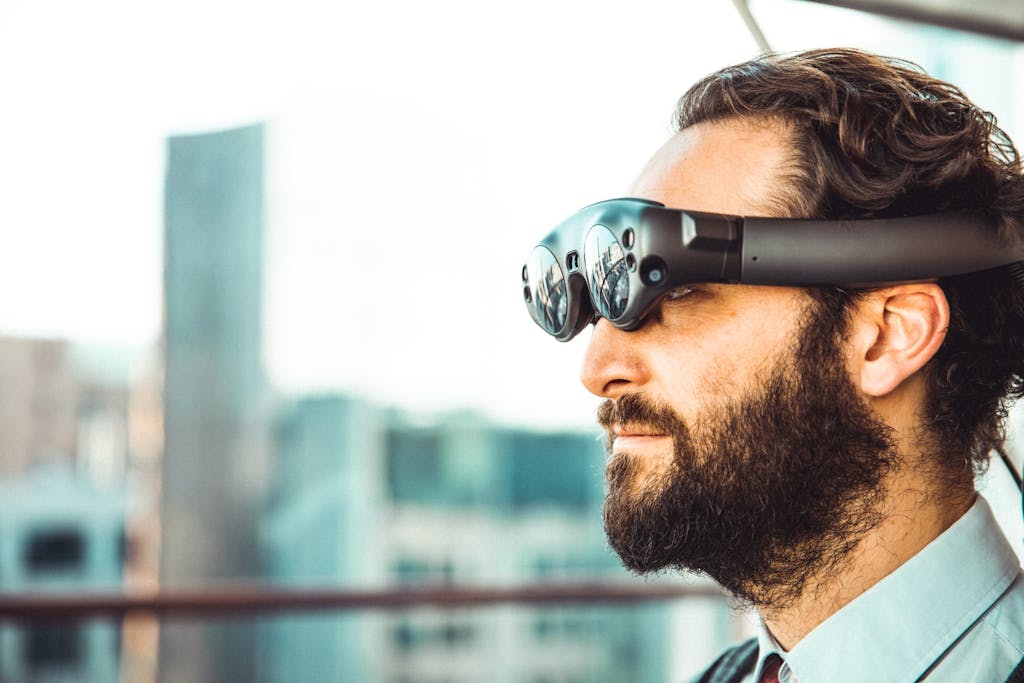SOCIAL
Understanding Augmented Reality (AR) And Its Impact On Our Lives
Augmented Reality (AR) is an enhanced version of reality where real-world objects are augmented using a technology that overlays computer-generated content onto a user’s view of the real world – the virtual content appears to become part of the real world. It is a combination of real life and virtual reality. The concept of ‘augmented’ came from the word ‘augment’ which means to enhance something.
4 min. Read

Augmented Reality (AR) is an enhanced version of reality where real-world objects are augmented using a technology that overlays computer-generated content onto a user’s view of the real world – the virtual content appears to become part of the real world. It is a combination of real life and virtual reality. The concept of ‘augmented’ came from the word ‘augment’ which means to enhance something.
Top 20 Fortune 500 technology companies like Apple, Google, and Facebook are putting a lot of effort into augmented reality. While the concept of AR may still feel like a mystery to some, it is already making an impact on our everyday lives. Apple’s iOS 12 puts AR into the hands of millions of its consumers. Tim Cook, Apple’s CEO, says, “AR will change everything”.
Google’s ARCore and Apple’s ARKit are turning AR into a mainstream technology. The AR glasses were just a glimpse of how AR can improve the way we look at reality.
Augmented reality vs virtual reality (VR)
What’s the difference between AR and VR? Many people use these two different concepts interchangeably. Virtual reality takes users into an artificially created digital environment. AR, on the other hand, helps users experience the real world while digital content added to it. With VR, you can look in every direction and move around as if you were physically there.
Application of AR in mobile development
Augmented reality is the next gold rush with a potential to completely reshape the way organisations present content. Pokemon Go is a great demonstration of how mobile-based AR could change the real world into a game space and have millions of people experience a completely different world of fun. While Facebook is planning to bring about camera-based sharing of AR content, Apple is turning its top class software/hardware integration to their advantage by facilitating developers in building futuristic apps.
IKEA, a company that designs and sells ready-to-assemble furniture, built an ARKit app which customers can use to place virtual furniture in their own home through mobile devices. You can virtually place a piece of furniture and see how it will look in a given space. Isn’t it cool? Users can generate and interact with virtual yet realistic models of everything from large civil structures to human body.
How augmented reality is transforming customer experience
Is it possible that, instead of visiting shopping markets, you can project a range of products into your living room? AR is making this happen. Experts believe that AR will ultimately make smartphone technology become obsolete and irrelevant. Within 10 years, we are likely to experience completely different interfaces based on AR possibilities, these may include AR contact lenses. A world without screens will offer truly limitless possibilities.
As AR technology is going through a transitional phase from innovation to maturity, it will shake up the retail industry and customer experience. Automation helps companies deliver fast, more personal customer experiences. To see how augmented reality can add value to the retail industry requires a little creative imagination. AR will enhance the customer experience by making it more digital and personal.
Innovative AR products
Smartphones are the biggest distribution channel for AR. The technology uses the screen and camera of your smart device to operate. However, augmented reality is being incorporated into a number of products other than smartphones. Microsoft HoloLens is the first holographic mixed reality smart glasses that enables you to engage with digital content, going beyond the screen.
Google is working on AR to improve the way Google Maps show map images. Augmented reality maps will overlay turn-by-turn walking animations and instructions over the real-time feed from your device’s camera. Google Glass was another amazing product often described as an evolution of the smartphone. It was designed as a channel to freely access data without a handheld device.
Augmented reality glasses are a combination of a few key parts which function together to create the virtual effects and add them to the real world. These parts include a display, camera, computer vision, image registration and the view of field.
Conclusion
The future will witness a remarkable growth in AR applications. From healthcare to education, AR can help almost every industry design incredibly interactive customer experiences. Technology businesses should focus more on innovative technologies like AR/VR to embrace change and achieve sustainable growth.
RELATED BLOG

6 Ways To Make Your Startup Investor Ready
Funding is the number one factor that can drive or restrict your startup idea becoming a reality. While bootstrapping (essentially doing everything yourself or hiring people on the cheap) is an option...

Reasons to Be Rejected by the App Store
I've nominated myself to start listing all the obscure reasons that Apple could reject your mobile app while it's in the review process. Many Product Owners and Software Engineers get tripped up by ma...

Cross-Platform vs Native Development
Mobile phones are no longer used for making phone calls. In fact, a small total of 7% of the time is spent on communicating directly via calls or text messages. It can be assumed that the rest of a us...
 hello@appspeople.com.au
hello@appspeople.com.au Perth (08) 9325 1992
Perth (08) 9325 1992